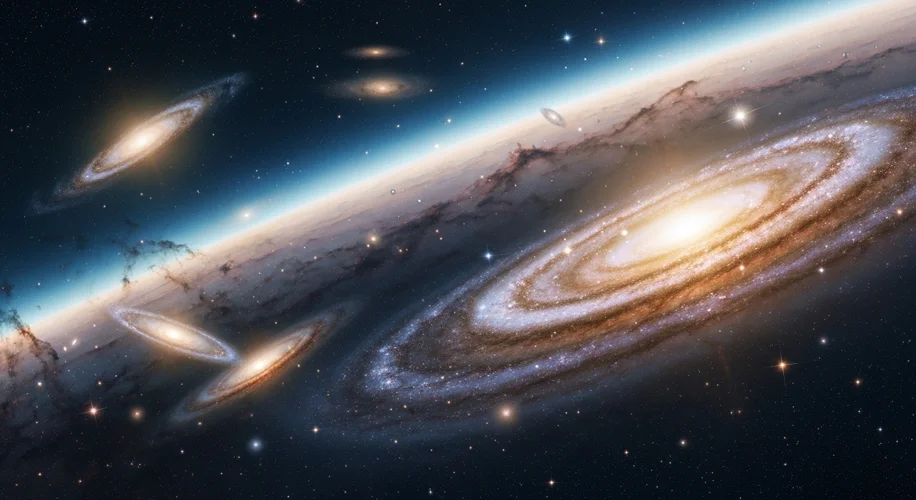A Cosmic Giant Challenges Our Galactic Origin Story
Did you know that the universe, in its infancy, might have been a lot more crowded with massive galaxies than we ever imagined? For years, astronomers have relied on established models to understand how the first galaxies formed and evolved after the Big Bang. These models generally predict a gradual build-up, with smaller structures merging over time to form the vast galaxies we see today. But as always, the universe loves to keep us on our toes.
Recently, new observations have thrown a bit of a cosmic curveball our way. Telescopes, like the incredibly powerful James Webb Space Telescope, have spotted what appear to be exceptionally massive galaxies existing surprisingly early in the universe’s history – mere hundreds of millions of years after the Big Bang. We’re talking about galaxies that seem to have accumulated their immense size and mass much faster than our current theories allow.
What does this mean for our understanding?
It’s like finding a fully grown redwood tree in a nursery full of saplings. If these early, giant galaxies are indeed as massive and formed as quickly as they appear, it suggests our models might be missing some crucial pieces of the puzzle.
Possible explanations are already being discussed. Perhaps the conditions in the early universe were more conducive to rapid star formation and galaxy assembly than we previously thought. Maybe the distribution of matter, including dark matter, played a more significant role in accelerating this process. Or, it could be that these observed objects aren’t quite what they seem, and further analysis will refine our understanding.
This isn’t about discarding our existing knowledge; it’s about refining it. Every significant astronomical discovery pushes the boundaries of what we know and encourages us to ask deeper questions.
Why should we care?
Understanding galaxy formation is fundamental to understanding the universe we inhabit. It’s part of a grand, ongoing cosmic narrative. These discoveries remind us that the universe is vast, mysterious, and still full of surprises. It’s this continuous process of observation, questioning, and revision that drives scientific progress. It’s a testament to human curiosity and our relentless pursuit of knowledge, pushing us to constantly update our cosmic storybook.
I’m excited to see how astronomers tackle this new challenge. It’s these moments that truly expand our cosmic horizons!

